Transportation network | 0.1.5
Summary
This update introduces an updated transportation system. It is now possible to build specific transportation objects in the network, this includes various roads and railways. Each transportation object has it's own capacity limit and resource inputs. Transport capacity is used to transport resources, and can limit the total transport rate.
Changes
The user can now construct transportation objects on tiles. In the GUI the tiles capacity and capacity usage is showed. Potential resource input/output is listed and a pie chart visualizes the percentage of the capacity allocated to each resource. Resources are now only transported on/between tiles containing transportation objects.
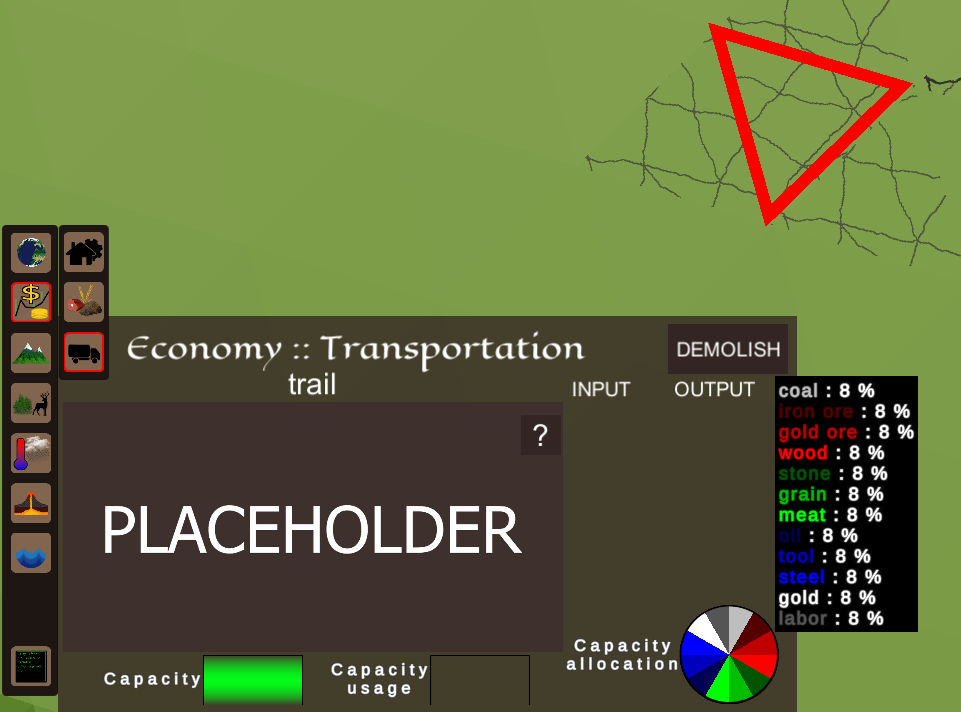
Transportation objects can easily be added through an .xml file. The templates allow resource inputs, which enables the modelling of fuel usage for transportation. Here railways require coal, and highways require oil. One could also add roads that require electricty (electric vehicles/trains) or hydrogen for example. Output could be used to model waste or exhaust pollution.
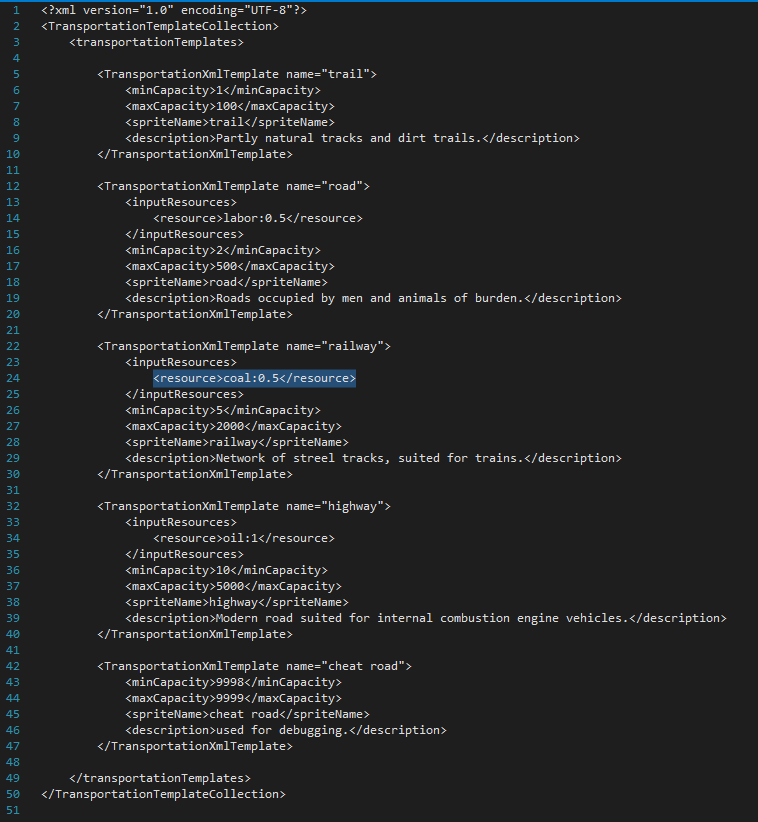
On the world map the transportation network is visualized with sprites showing webs of roads, with different width/density/darkness.
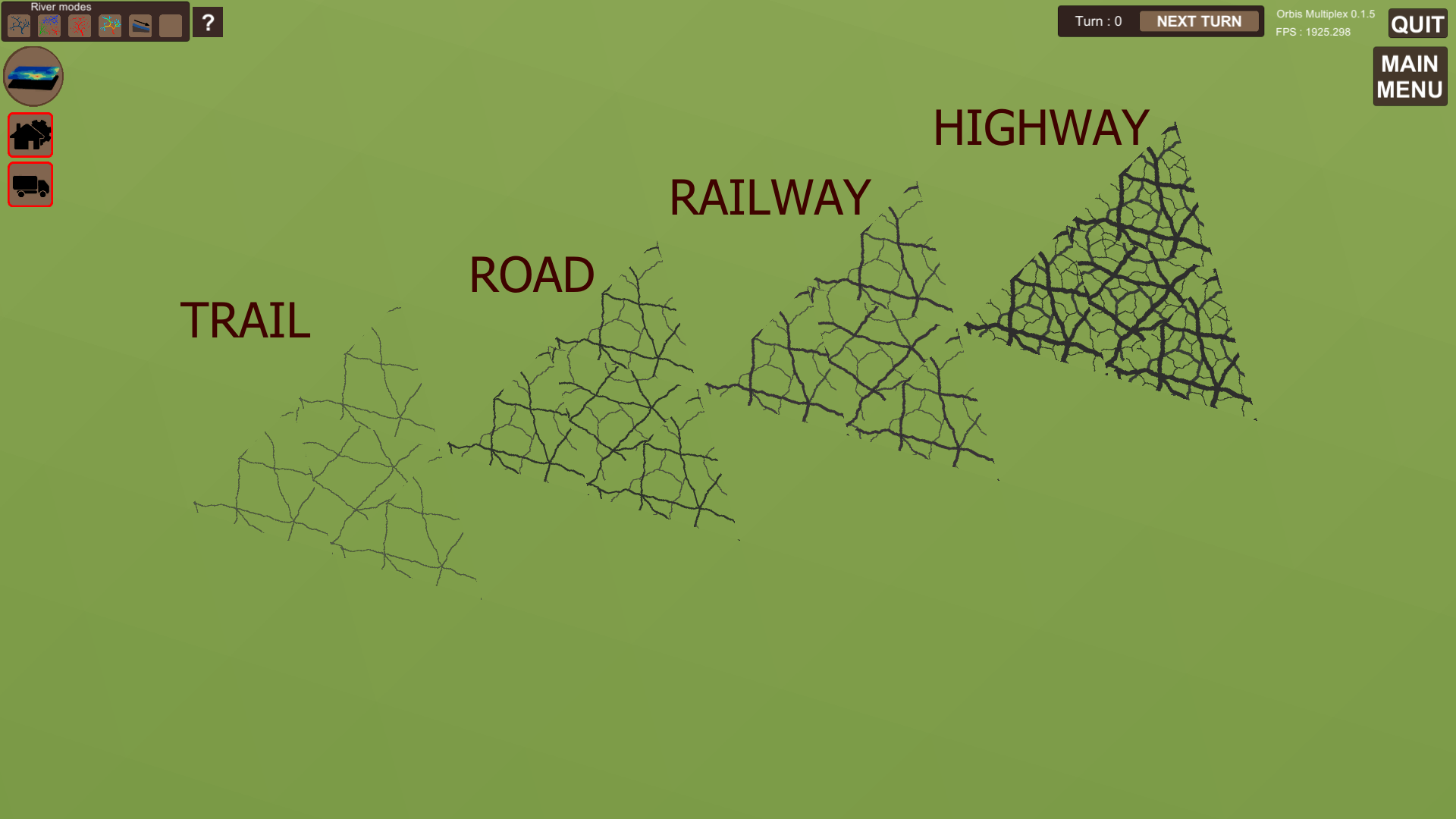
The capacity of a road acts as a limit for transporting resources. A too low capacity will create bottlenecks that interfere with the resource flow. The images below shows 2 networks. One with trails (maxCapacity = 100) and the other with roads (maxCapacity = 500). The first network is bottlenecked, in that network labor does not reach the lumbermills to the right consistently. The second network has sufficient capacity, which enables smooth transportation.
This image shows the amount of labor. In the first network there is backed up unnused labor to the left.
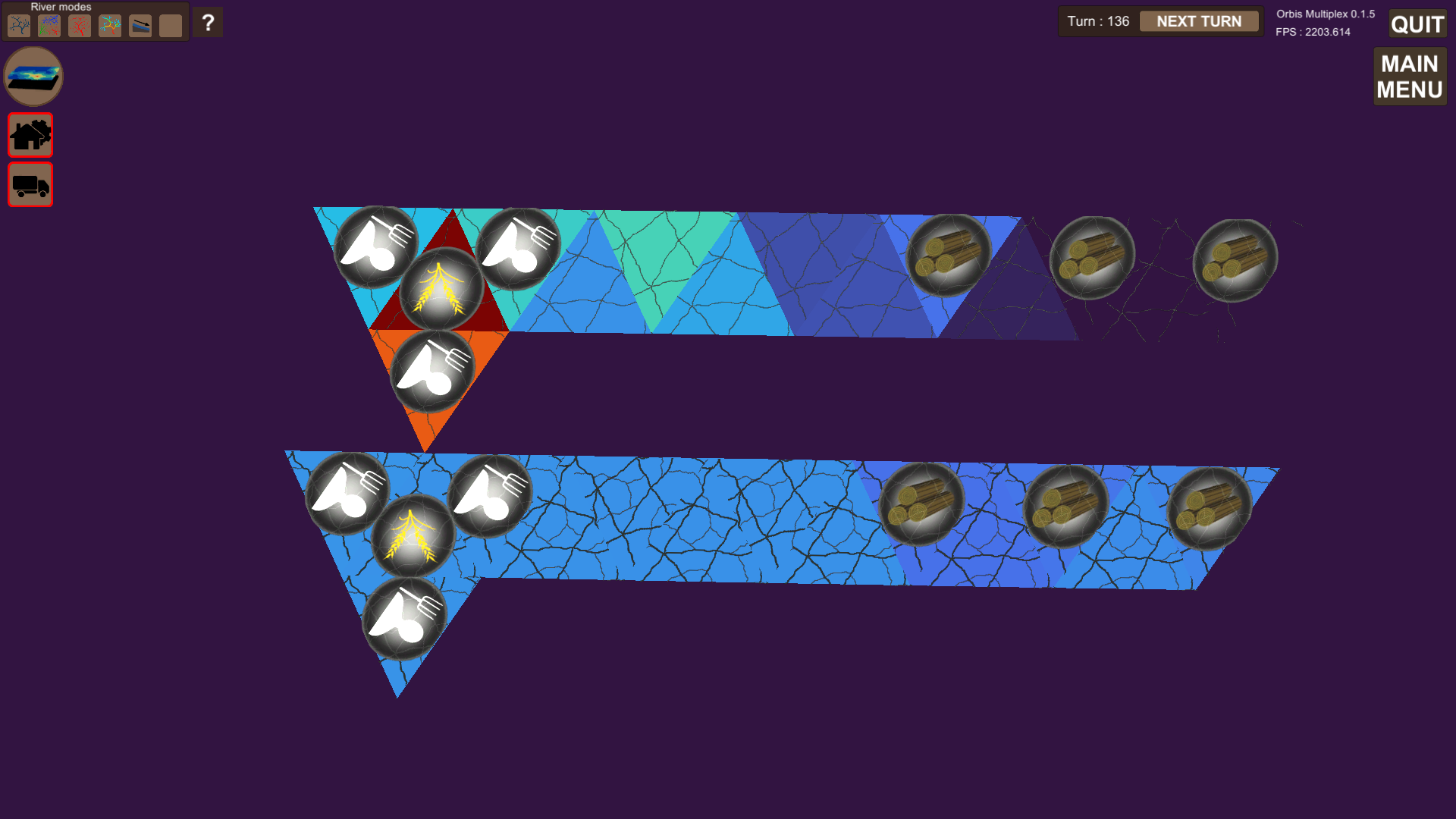
This image shows the capacity usage, red tiles are bottlenecked.
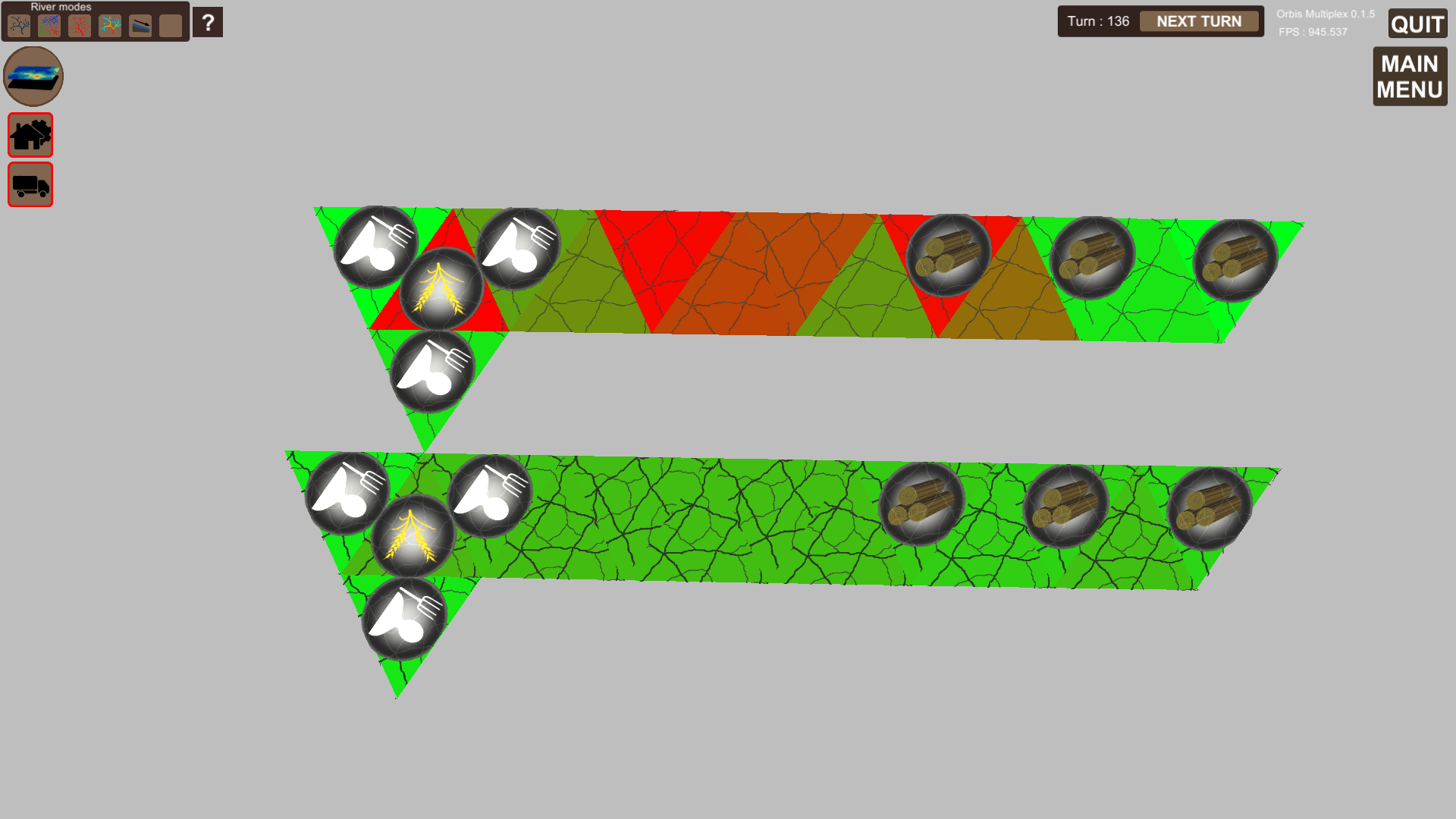
Resources are transported multithreaded using a modified shallow water equation.
TODO
Short term
These 2 systems are planned to be done by the end of march 2022.
Automatic turns
Pressing the "Next turn" 100's of times, just to see resource be transported around, isn't great. "Turns" or "ticks" will need to be processed continuously during the gameplay. A reasonable "tick" update time would be something like 5 seconds.
Population dynamics
At the moment populations are sort of included in the "residence" and "self sustaining village" industries, this was always intended to be temporary. The proper system will separate the industry system and the population system. Each inhabited tile should have a population value. This population value changes dependent of available food and other resources. Excess food will gradually increase the population, on a tile per tile basis. Tiles with a population will produce the resource "labor", independent of the constructed industry.
Long term
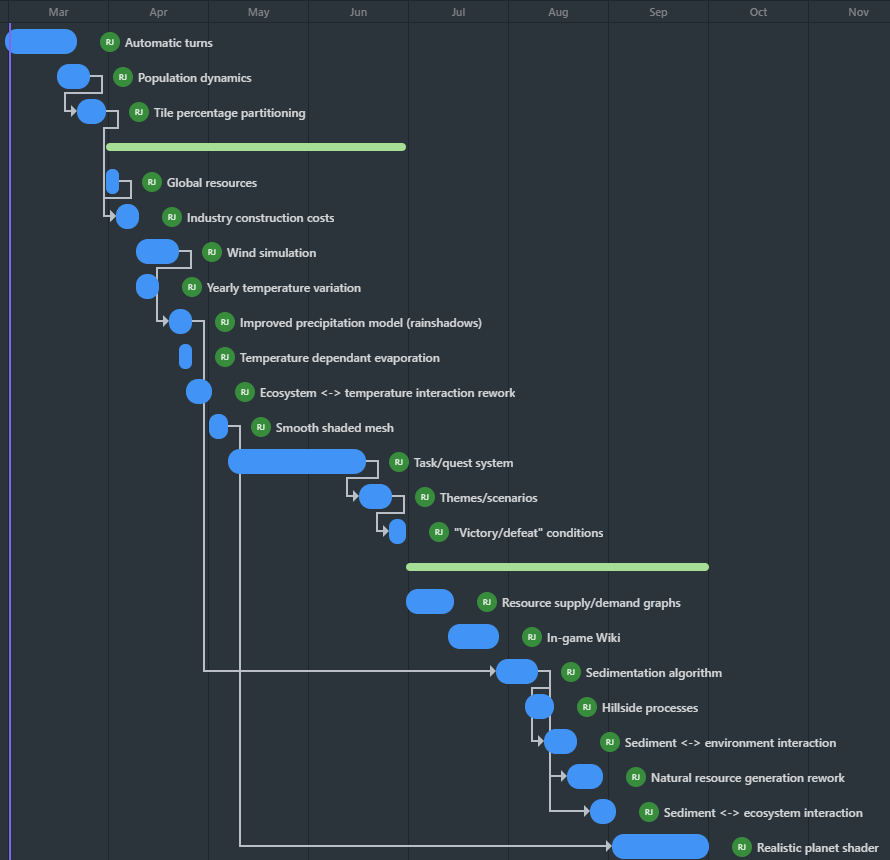
Long term, some stuff will most likely change.
Files
Get Orbis Multiplex
Orbis Multiplex
A complex simulation oriented strategy and management game on planetary scale
| Status | On hold |
| Author | Robin Johansson |
| Genre | Simulation, Educational, Strategy |
| Tags | 4X, Automation, Economy, Generator, Management, Procedural Generation, Singleplayer |
| Languages | English |
More posts
- Generating hexagonal meshes on spheresAug 14, 2022
- Hexagonal grid | 0.2.0.0Aug 07, 2022
- Automatic tick progression | 0.1.6Mar 25, 2022
- Ground water diffusion from rivers | 0.1.4Feb 18, 2022
- Updated landscape evolution algorithm | 0.1.3Feb 03, 2022
- Minor industry additions | 0.1.2Jan 28, 2022
- Industry production added to gameplay | 0.1.0Jan 26, 2022
- Version 0.0.11Dec 19, 2021
- Version 0.0.10Sep 24, 2021
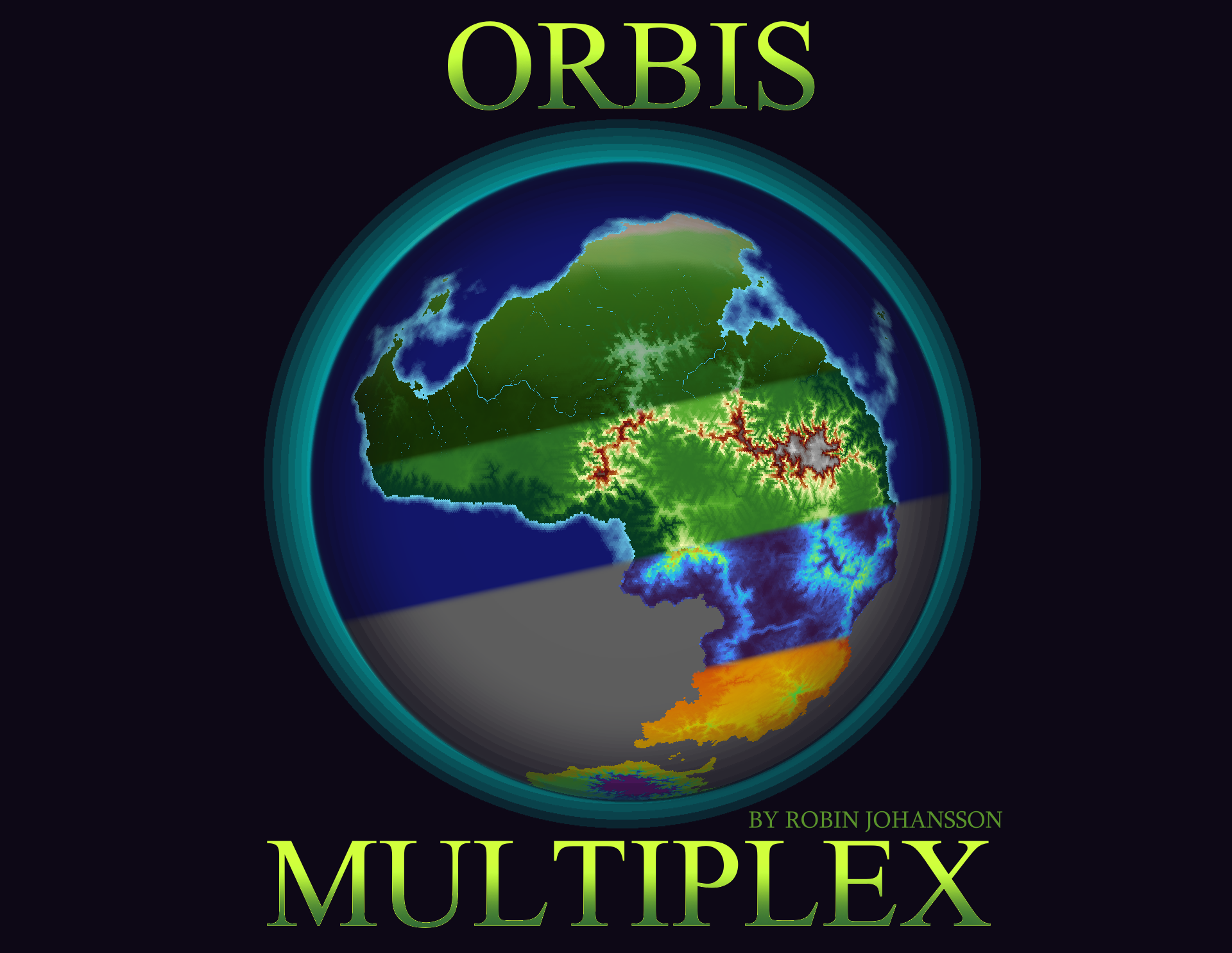
Leave a comment
Log in with itch.io to leave a comment.